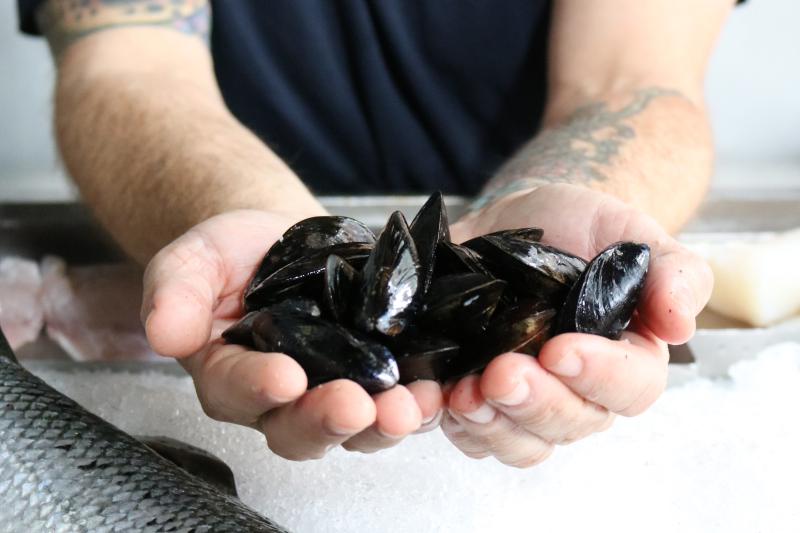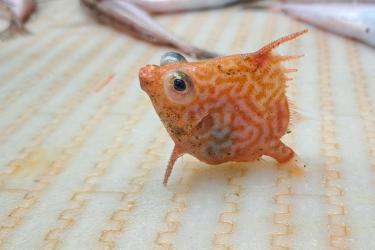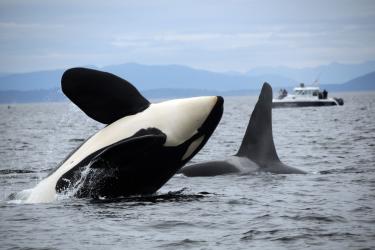Join us in celebrating Aquaculture Week. Marine aquaculture (or farmed seafood) is vital for supporting our nation’s seafood production, year-round jobs, rebuilding protected species and habitats, and enhancing coastal resilience. Aquaculture—the breeding, rearing, and harvesting of animals and plants in all types of water environments—is one of the most resource-efficient ways to produce protein.
Marine aquaculture is an important and growing U.S. industry with the potential to provide a significant sustainable supply of healthy seafood for domestic and global markets. The future of sustainable seafood must include both farm-raised and wild-capture seafood.
Seafood farming, if done responsibly as it is in the United States, is increasingly recognized as one of the most environmentally sustainable ways to produce food and protein. Marine aquaculture can expand and stabilize the U.S. seafood supply in the face of environmental change and economic uncertainty.
Check out the features below to dive a little into aquaculture.
Aquaculture Features
Leadership Message: Aquaculture Week
Aquaculture Week is our yearly opportunity to highlight the aquaculture community’s accomplishments and impacts. As we celebrate, it is important that we not downplay the impact of COVID-19 has had on our partner organizations, the seafood supply chain collectively, and our nation. While the challenges have been substantial, we want to recognize the commitment and resilience shown by the aquaculture community.
NOAA Fisheries Assistant Administrator Janet Coit provides her perspective on advancing sustainable aquaculture in the United States.
Read the leadership message from Janet Coit
Office of Aquaculture Updates State Aquaculture Regulatory Inventory Resources
U.S. aquaculture operations are subject to a complex array of regulations that growers sometimes find challenging. Recently, the Office of Aquaculture revised its state aquaculture regulatory resources to provide a clear source of finfish, seaweed, and shellfish permitting information.
See state-by-state aquaculture permitting reports
Perspectives on Careers in Aquaculture
Meet the chefs, seafood farmers, and the aquaculture professionals who help bring seafood to our tables.
Learn more about aquaculture careers from NOAA's Office of Education
New Report Highlights Alaska Aquaculture Priorities and Accomplishments
Explore projects and actions that support the growing Alaska aquaculture industry.
Learn more about Alaskan aquaculture priorities and accomplishments
Eyes Underwater: Complementary Tools Can Determine How Fish Use Oyster Aquaculture Gear
Scientists document the underwater world of shellfish farms using video and environmental DNA.
Learn more about tools that determine how fish use oyster aquaculture gear
Fostering Diversity and Inclusion in Aquaculture
A diverse, equitable, and inclusive workforce can enhance innovation in sustainable fisheries and aquaculture.
Learn more about fostering diversity and inclusion in aquaculture
Oyster Ninja Introduces New Audiences to Shellfish
Meet the podcaster bringing fun facts—and freshly shucked oysters—to his listeners.
Learn more about the Oyster Ninja
Hawaiian Fishponds: Providing Physical and Cultural Sustenance
A growing network of fishpond practitioners and organizations from across ka paeʻāina o Hawaiʻi (the Hawaiian archipelago) are restoring the region's traditional aquaculture ponds.
Learn more about Hawaiian fishponds
Digging Up Diversity Opportunities on Shellfish Farms
As a farm manager at Taylor Shellfish, Aisha Prohim draws on her agricultural background to raise seafood and increase diversity in the aquaculture industry.
Learn more about Aisha Prohim and her work fostering opportunities
Highlighting Aquaculture SK Grants
Queen Conch Aquaculture Partnership in Puerto Rico Supported by NOAA Fisheries Grant
A first of its kind partnership is restoring queen conch and building opportunities for community involvement in species restoration.
Learn more about the queen conch aquaculture partnership
NOAA-Supported Aquaculture Projects Seek to Build Hawaiʻi Seafood Sustainability
Aquaculture projects with Hawaiian sea cucumbers and goatfish could benefit ancient fishponds and commercial aquaculture operators.
Learn more about NOAA-supported aquaculture projects














